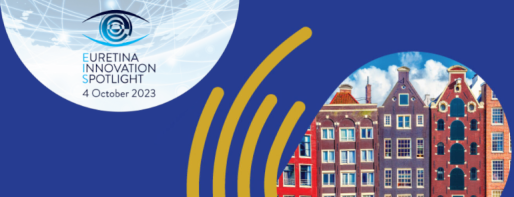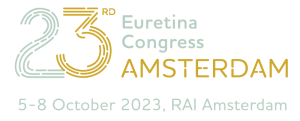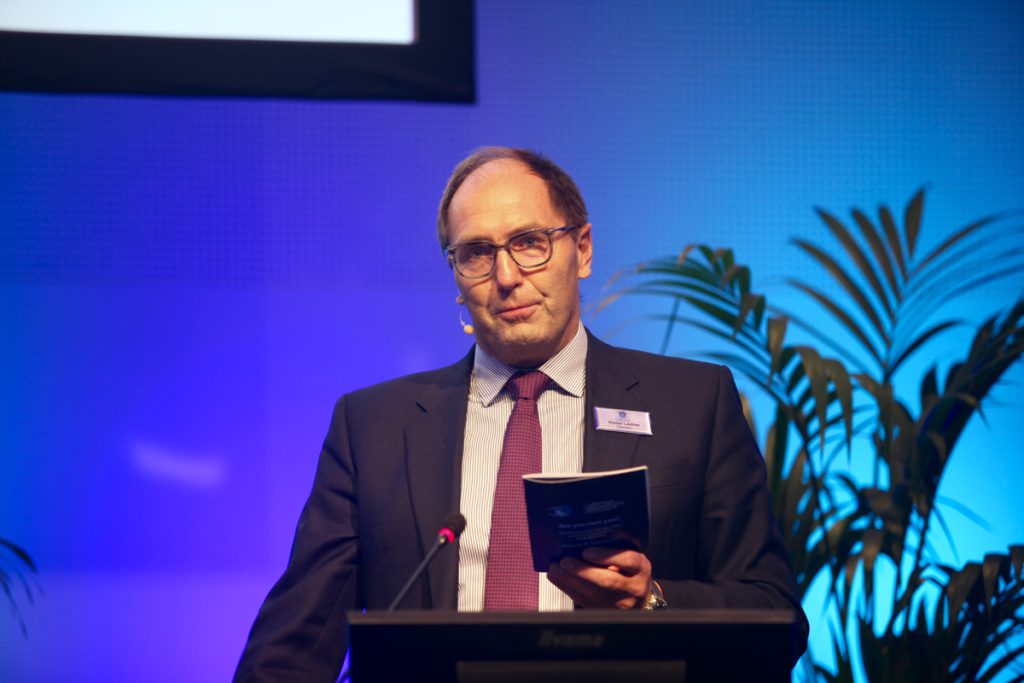The Inaugural EURETINA Innovation Spotlight (EIS) held on October 4th, 2023 brought together the stakeholders involved in the development of the next generation innovative retinal therapies and diagnostics. In launching this new event, the goal of EURETINA was to create and foster communication and collaboration to advance and improve the care of patients with retinal diseases.
Welcoming the large group of attendees, EURETINA President Dr Alistair Laidlaw reiterated that the meeting provides attendees the opportunity for networking, learning, and perhaps for challenging some new ideas. He also extended thanks to the large number of corporate sponsors for their support that made the meeting possible. Summarising data collected in a premeeting survey sent to EIS registrants, Dr Laidlaw noted that the majority of respondents believe that investment in retina innovation will increase in the coming year.
“This means that there is probably a need for more events like this where we can interact and make sure investment is targeted in the right direction,” Dr Laidlaw said.
The programme featured key industry representatives from start-ups to large public companies presenting their innovations in various treatment modalities, including next generation gene therapy, innovative biotechnologies, surgical instrumentations, imaging, and artificial intelligence (AI). Leaders from investment firms spoke as well, providing perspective on issues that support project funding and regulatory approval.
Each session was discussed by a panel including innovators, clinicians, scientists, regulatory experts and investors.
“The main aim of this exciting new event is to provide a platform where companies developing medications, devices, and other technologies for aiding retinal disease diagnosis and management can share their novel, cutting edge ideas with other researchers, regulators, investors, and key opinion leaders among the physicians who are the end users,” said Prof Anat Loewenstein, a member of the EIS Organising Committee. “Identifying and addressing unmet needs is part of the purpose of EURETINA, and the EIS represents another route towards fulfilling this role.”
She added, “Clearly, the industry innovators had the most to gain from participating in the EIS, but the meeting also has important implications for regulators who hopefully acquired a new understanding of ongoing research and the possible need to introduce new outcome measures for evaluating efficacy and safety of interventions targeting previously untreatable diseases.”
Dr Kourous Rezaei, also serving on the EIS Organising Committee emphasised, “Drug development is a complex process that includes many stakeholders. The goal of EIS was to bring together the involved stakeholders under one roof and allow for a lively discussion, collaboration, and networking. More importantly, it is also intended to give EURETINA members the opportunity to be exposed to these discussions, which could help them better understand what is involved in drug development and become familiar with the next generation of the most cutting-edge retinal treatments being developed by industry.”
EIS Organising Committee member Dr Frank Holz added, “The inaugural EIS was a great success from the outset, so much so that the organising committee needed to expand the programme to include the higher-than-expected number of contributors seeking a place at the podium. Further, the audience and the sponsors’ enthusiasm confirmed that the EURETINA leadership is on the right track to include EIS as a part of the EURETINA meeting in the years to come.”
Offering closing remarks at the end of the EIS, Dr Ramin Tadayoni thanked attendees along with the moderators, speakers, panelists, and everyone who helped organize the event.
“If you have suggestions for the future, please let us know. I invite you all to join us again next year, and we look forward to having as interesting a discussion as we had today or even better, Dr Tadayoni said.
View the EIS photo gallery here


